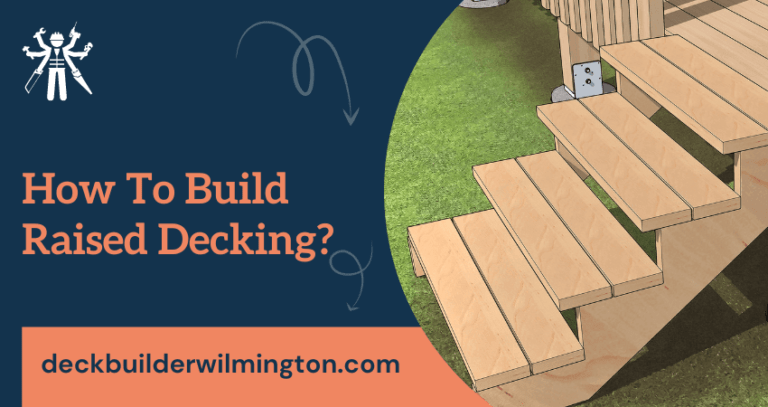Composite vs Aluminum Deck Railing?
Are you looking to upgrade your outdoor living space with a new deck railing? With so many options available, it can be hard to decide which material best suits your needs. We’re here to help make the decision simpler for you by comparing two popular materials: composite and aluminum.
In this blog post, we’ll discuss the differences between these two types of deck railings including their strengths and weaknesses, so that you can make an informed choice when selecting the right one for your home.
Whether you are renovating an existing deck or building a brand-new one this summer, let’s take a closer look at composite vs aluminum deck railing systems and determine which type is right for you!
Composite vs Aluminum Deck Railing
When it comes to deciding between composite and aluminum deck railing, there are a few things to consider. Composite decks have a natural wood look that many homeowners prefer for their aesthetic value. However, composite materials require more maintenance than aluminum, as they can be prone to fading or staining over time.
Aluminum decks don’t need any additional maintenance and are more durable than composite materials. Aluminum also holds up well against moisture, so it’s a great choice for decks that will be exposed to the elements.
Both types of deck railings have their advantages and disadvantages, so it’s important to weigh each option carefully before making your final decision.
Once you’ve decided on the material, it’s time to get started with installing your deck railing. Make sure to read all instructions carefully before beginning any work and follow local building codes.
Begin by measuring out and marking the area where you want to install the railing posts. Then use a power drill or hammer to secure the posts into place. To make sure the posts are secured correctly, use a level to check that each post is standing straight.
What is a composite deck railing made of and how is it different from an aluminum railing?
A composite deck railing is typically made of a combination of wood fibers and plastics. The materials used can vary depending on the manufacturer, but many common composite deck railings are composed of a combination of polyethylene and sawdust to create a strong and durable material that looks similar to natural wood. Composite railings provide a low-maintenance alternative to wood railings and are available in a variety of colors, sizes and styles.
Aluminum railings are typically made with extruded aluminum profiles that are then coated with a powder-coated finish for protection against the elements. Aluminum railings offer durability and strength but don’t have the same natural look as composite railings.
They are also more expensive than composite railings and require more maintenance, such as regular cleaning and painting to prevent rust. Additionally, aluminum railings don’t come in as many colors, sizes and styles as their composite counterparts.
Benefits of using a composite deck railing over an aluminum railing?
The primary benefit of using a composite deck railing over an aluminum railing is that it is more durable and resistant to weathering. Composite deck railings are constructed with a wooden core, which is then wrapped in a protective shell made up of PVC or other synthetics such as vinyl or polyethylene.
Additionally, composite deck railings are much more aesthetically pleasing than aluminum railings as they come in a much wider range of colors and styles and can be easily customized to match any outdoor décor.
Another advantage of composite railing is that it requires much less maintenance than an aluminum railing would. As the composite material is resistant to warping, cracking, and splitting due to extreme temperatures, it does not require any sanding or painting as an aluminum railing would.
Furthermore, composite deck railings are also much easier to clean than their aluminum counterparts as they only require occasional washing with mild soap to keep them looking their best.
Finally, composite railings are also much more cost-effective than aluminum railings as the materials used to construct composite deck railings are often less expensive and require fewer repairs due to their increased durability. This makes them a great choice for those on a budget looking for an attractive and long-lasting outdoor solution.
Cost difference between a composite and aluminum deck railing
Composite deck railing is typically more expensive than aluminum, but it is also more durable and requires less maintenance. Aluminum railings tend to be less expensive upfront, but they require more regular upkeep to maintain their appearance and structural integrity.
The table below compares the two materials in terms of cost and durability:
| Material | Cost Per Linear Foot | Durability |
| Composite | $50 to $150 | High |
| Aluminum | $40 to $125 | Medium |
Overall, composite materials are usually more costly than aluminum but offer a higher level of durability and require less maintenance. Therefore, it’s important to weigh your budget against the expected lifetime of the railings when making a decision.
You should also consider any safety concerns regarding the location where you plan to install the railing. If you are in an area with extreme weather or high winds, aluminum may be the better choice due to its lighter weight and greater ability to withstand corrosion.
On the other hand, a composite railing may be more suitable for areas where fewer safety hazards are present. No matter which material you choose, deck railings can provide an attractive addition to your outdoor space while adding a layer of safety and security as well. With a few considerations in mind, you can find the option that best fits your needs.
Which type of deck railing is best for your home?
When deciding which type of deck railing to install in your home, it’s important to consider several factors. The most common types of deck railings are wood, metal and composite materials. Each has its advantages and disadvantages.
Wood is the traditional material for deck railing and offers a classic look that can be customized with finishes and stains. It is generally the least expensive option and can be a great choice for DIY projects. However, wood requires regular maintenance to keep it in good condition, such as staining or painting every few years.
Metal railings are usually made of aluminum and require little maintenance. They tend to be more durable than wood but are also more expensive. They come in various styles and can be customized with powder coating to match your home’s exterior. Metal railings are great for areas that experience a lot of snow or rain, as they don’t rust like wood.
Composite deck railings are made from a combination of wood fiber and plastic, which makes them low maintenance and weather-resistant. They are also the most expensive option for deck railings and are not suitable for DIY projects due to their complex installation process.
Composite deck railings come in a variety of colors and styles, making them a great choice if you want a more modern look for your home. No matter which type of deck railing you choose, make sure it meets your local building codes and is installed correctly for maximum safety.
It’s important to keep in mind the cost, style and maintenance of each option before deciding so that you can find the right railing for your home. With careful consideration and research, you can be sure to find the perfect deck railing for your home.
Conclusion
The choice between composite and aluminum deck railing is an individual decision based on one’s preference and budget. Both types of materials offer a stylish look, yet the characteristics of each are different in many ways. Composite railings are known for being low maintenance, long-lasting and environmentally friendly but come with a higher price tag.
Aluminum railings, on the other hand, are heavier but more affordable and ideal when strength is your priority. Both options present distinct advantages and disadvantages according to one’s unique needs and want.
No matter what type of deck surface you choose to install, having a quality railing will add safety, structure and aesthetics to your space while bringing you years of enjoyment. By researching all the options available it’s possible to create the perfect outdoor living space custom tailored to fit your lifestyle!







